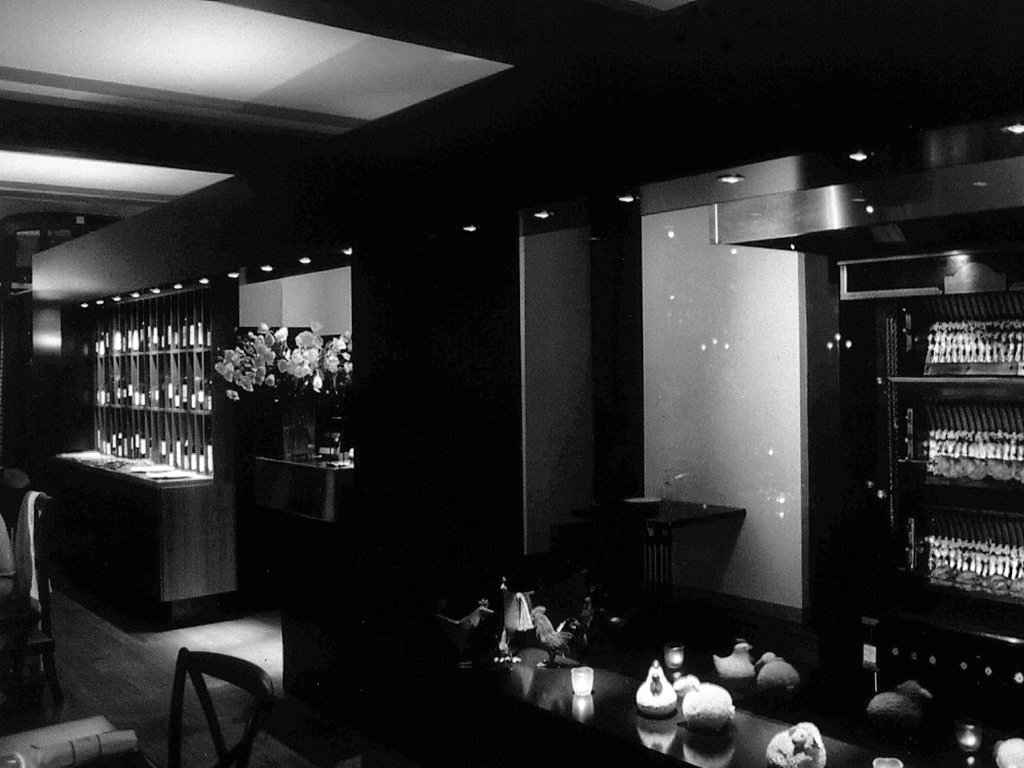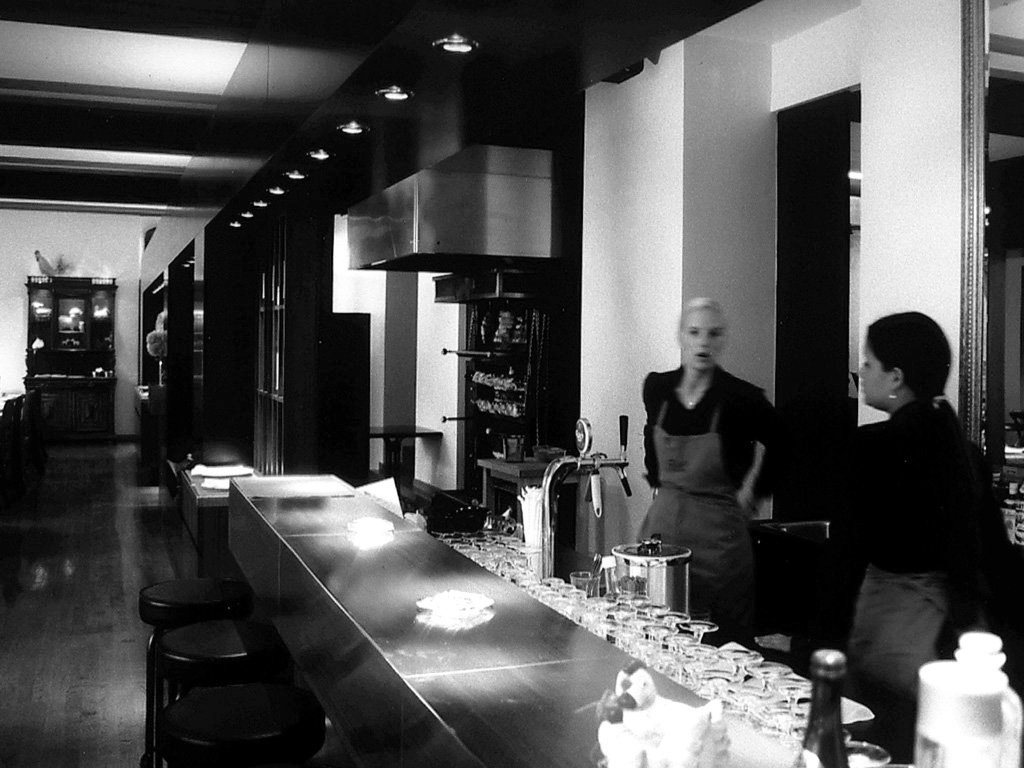Transformation d'un restaurant
Genève



Transformation d'un restaurantGenève Privé
Le restaurant actuel a fait l’objet d’une transformation et d’une adaptation à de nouveaux besoins en matière d’équipement, d’espace, et d’ambiance.
L’édifice qui l’accueille a, préalablement à ce projet, subi deux types de transformation,
l’une, strictement spatiale, est relative à l’installation des deux verrières qui modifie la qualité et la perception spatiale de la salle de restaurant. Cette opération fait désormais partie intégrante du lieu et n’appelle par conséquent, aucun retour,
l’autre, strictement décorative, est relative à la traduction littérale d’un type de restaurant immédiatement identifiable, sa conservation ne pouvait relever que de de la pérennité de cette identité et s’opposait aux attendus d’un autre restaurant.
La Broche, dont le concept est appelé à devenir transportable et reproduisible, nécessitait, pour autoriser l’investissement de nouveaux lieux, tous, par essence spatialement différents, la définition d’un élément reconnaissable, exempt de toute contrainte directement liée aux conditions de sa première installation.
C’est par la mise en scène de la rôtissoire, élément central, spectaculaire, signe évident et démonstratif de la cuisine proposée, que s’est dessinée, au sein d’un espace ayant retrouvé son caractère, l’image du restaurant.
Sa représentation est l‘inscription d’un grand meuble rassemblant, contenant et supportant toutes les fonctions nécessaires, libérant et unifiant l’espace de la salle dont il devient, tout à la fois, l’écran, la scène et les coulisses.
avec Pierre Bouvier architecte
The current restaurant has undergone a transformation and an adaptation to new needs in terms of equipment, space, and atmosphere.
The building that houses it had previously undergone two types of transformation:
The first, strictly spatial, relates to the installation of two glass roofs, which altered the quality and spatial perception of the dining room. This intervention has now become an integral part of the space and, as such, requires no reversal.
The second, strictly decorative, involved the literal translation of a readily identifiable restaurant type. Its preservation could only be justified by the desire to maintain that specific identity, which was incompatible with the intentions of a different restaurant concept.
La Broche, whose concept is meant to be transportable and replicable, required, in order to be installed in new locations, each inherently different in spatial character, the definition of a recognizable element, free from any constraints directly tied to the conditions of its original implementation.
It is through the staging of the rotisserie, the central, spectacular element and a clear, expressive sign of the cuisine offered, that the restaurant’s identity emerged within a space that had regained its original character.
Its expression takes the form of a large, singular piece of furniture that gathers, contains, and supports all the necessary functions, while freeing and unifying the dining room. It becomes, at once, the screen, the stage, and the backstage of the space.
with Pierre Bouvier architect